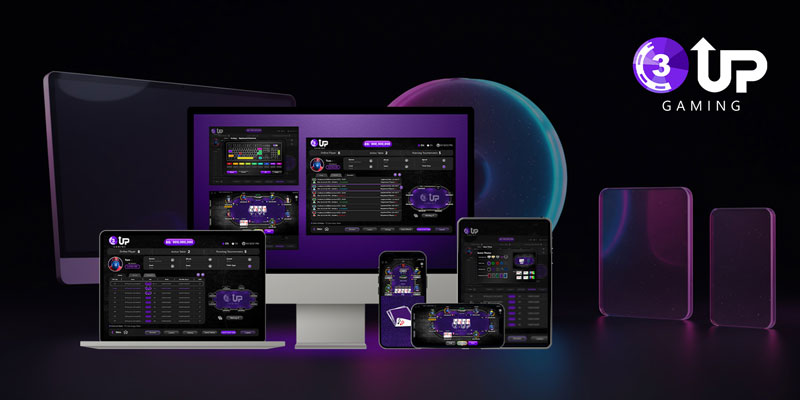White Label Poker Platform Comparison: All that to Search for in 2025’s Front Service providers! Choosing the best white label platform is a business choice in the rapidly changing online poker space, and not a technological one. Your profitability, player satisfaction, operating efficiency, and scalability will all be impacted directly by what platform you choose.
Knowledge of what to do is most crucial in standing out in a competitive online environment because 2025 will introduce more competition and even newer technologies. The article aggregates the most important considerations, compares top providers, and helps you with making the decision of which one suits the role of your poker brand best.
The key differences among top providers in 2025 will be described in this white label poker platforms comparison, so you can make an informed and profitable choice.
White Label Poker Platform Comparison: All that to Search for in 2025’s Front Service Providers!
In 2025, choosing the right white label poker platform requires a strategic comparison of leading service providers who offer front-end solutions tailored to brand-specific needs. From customizable UI/UX and robust security features to integrated payment systems and real-time analytics, this comprehensive comparison highlights the key elements businesses should look for.
Whether you’re a startup entering the iGaming space or an established brand seeking scalability, understanding the strengths and limitations of each provider will ensure a smoother launch and long-term success in the competitive online poker market.
Core Comparison: Features vs. Pricing

When selecting white label poker solutions, feature and cost balance typically determines scalability and long-term investment return. From simple multiplayer support to sophisticated analytics, in-game personalization, and automation features on the backend, providers have an incredibly vast array of features available. Features aren’t cheap, of course; some businesses offer tiered licensing, while others use flexible revenue-sharing arrangements.
Feature Set Breakdown
Premium platforms typically have:
- Modifiable game formats (Hold’em, Omaha, etc.)
- Secure payment interfaces and fraud protection
- Multi-lingual support for global reach
- Tournament and leaderboard modules
- AI-facilitated moderation and player behavior analytics
Some extend it further with in-built CRM systems, affiliate dashboards, and AI-facilitated engagement tools, which can make a huge difference in retention.
Pricing Models and Licensing Options
Common models are:
- One-time fees for licenses with optional annual support contracts;
- Monthly subscription packages, ideal for start-ups;
- Revenue-sharing models, where costs rise with expansion;
- and Hybrid plans, which combine front-end fees with back-end sharing.
When choosing a price plan, you should consider your projected traffic, revenue, and staff engagement with upgrades and expansion.
Scalability & Customization Options
In the online poker business your success is tied to your design for expansion. Your white label software application needs to be scalable to reach your objectives. That could be whether you’re aiming for a small niche market or drawing in a sizable mixed player base.
If a system is scalable, it will be able to handle financial transactions, game state processing, and real-time gameplay without downtime or delays. It will also be able to maintain stability and performance as the volume of concurrent users goes up.
Cloud infrastructures often enable better scalability as they can contain resources that develop dynamically with usage by users. Meanwhile, it shows at times by being less expensive, and its regionally hosted servers might not be able to handle sudden rushes of traffic at peak hours or global traffic.
The customization capability of the platform also matters. An established, structured format typically restricts your means to make your brand stand out in a competitive marketplace. You can turn on or off functionality based on your business model since the best white label poker software offered to you comes with modular designs.
To deliver a personalized user experience, there are branding elements that you’ll need to know. These are such as custom skins, logos, and UI themes required. Moreover, your product is interactive and flexible if you can adjust the game rules, tournament types, and lobby types.
Localization support, such as multi-language, currency, and time zone support, is another important feature, especially if you are serving international users.
Platforms that offer developer-friendly or advanced configuration access are of great value to operators. Being able to mold the platform to your vision and scale without hiccups is no longer a luxury in the competitive landscape of 2025; rather, it’s a necessity.
Performance & Load Handling
Gamers need low-latency connections and high-speed data processing, and thus the infrastructure of a white label poker site must be able to manage low-latency connections and high-speed data processing to process real-time transactions and decisions. Confidence of users can be easily shattered with any delays.
Games run smoothly even under heavy load thanks to a fast back-end architecture. This is typically powered by high-end server clusters or distributed cloud providers.
In the very competitive game of poker, every minute of inaction costs money and eventually damages one’s reputation. Enterprise-class solutions provide uptime of 99.9% or higher with the aid of automated failover, real-time monitoring, and redundant hardware.
It’s interesting to me that stress testing and real-world load simulation are the best ways to determine how well a platform performs under pressure.
Tier-one operators may handle thousands, if not tens of thousands, of users simultaneously. Web sites should be designed for vertical and horizontal scaling in order to handle increased traffic without compromising performance.
The instant that players register to tournaments, sit down at cash tables, or cash out, the system needs to react in a timely and predictable fashion.
In 2025, speed and dependability are the keys to success. A poker website that cannot handle a high volume of traffic is a bottleneck, but it is also a business risk.
Admin Tools & Backend Capabilities
The administrative backend of a white label poker platform is often its strongest point. A well-designed admin panel gives operators complete control over user accounts, table maintenance, and financial transactions, all through a simple interface.
From setting rake percentages to organizing promotional events, the platform should allow you to fine-tune every part of the user experience without the need for sophisticated technical knowledge.
Data analysis is one of the most critical aspects of managing platforms now. Dashboards are in a need to show real-time insights into player activity, or transaction numbers, engagement levels, and session length.
More intelligent marketing, better-directed promotions, and improved retention programs are all fueled by these insights that are working as one. High-performing platforms already offer operators a competitive edge through the implementation of AI-led technology to derive meaningful insights from huge data sets.
Security configurations are also important. You should not find it challenging to have user permissions, management of KYC/AML, and suspicious activity monitoring. Nowaday, you can choose solutions that have encrypted communication channels, multi-tiered access roles, and activity logs to safeguard your ecosystem.
Custom blinds, tournament structures, and table limits are a few examples of game configuration tools that round out the admin toolset and enable your product to be agile in its response to market needs.
Finally, your admin suite needs to be robust, user-friendly, and designed for expansion, more akin to a command center than a dashboard.
Third-Party Integration Support
With the extremely competitive online poker landscape today, the compatibility of a white label platform with reliable third-party services is not in question.
Seamless compatibility with numerous channels of payment is such that global users are able to make deposit and withdrawal smoothly and securely. The ideal sites provide extensive support, high speed in processing the transactions, and low downtime both for fiat as well as for cryptocurrency.
Compliance is also a secret to success for the platforms. Operators can confirm identities and mitigate fraud threats by integrating with strong KYC (Know Your Customer) and AML (Anti-Money Laundering) systems. They not only ensure regulatory compliance but also make user onboarding easier, which ultimately leads to winning confidence from the very first experience.
Beyond security, platforms should support CRM systems that allow for precise customer segmentation, personalized promotions, and automated engagement campaigns. When tied to detailed analytics tools, these integrations enable data-driven growth strategies by making user behavior, churn risk, and campaign performance visible at a glance.
Choosing a platform with flexible API architecture and a proven record of successful third-party integrations ensures your operation remains scalable, compliant, and competitive in a fast-evolving market.
Mobile Optimization & Multi-Device Play

By 2025, players will ask for a faster, more consistent, and easy-to-play game. Whether they’re on a high-resolution PC at home or a smartphone on the way to work, mobile-first design will be the norm for any professional white label poker platform in most parts of the globe.
The main platforms offer responsive designs or custom apps that function and appear identical on all screen sizes across PC, iOS, and Android operating systems.
Mobile performance shouldn’t be sacrificed. The mobile experience must replicate the features of full-scale desktop play, including secure payment integration, multi-table support, and real-time hand histories. Meanwhile, factors of performance such as latency, interface quality, and session continuity across devices remain top drivers of user satisfaction and long-term engagement.
A platform will lose most of its audience when it doesn’t provide excellence on several devices. In other words, if you are an audience, your feedback is truly evaluated. When evaluating providers, look for those with responsive frameworks, a track record of effective mobile UX testing, and positive user evaluations on app stores and browser-based play.
Marketing, SEO, and Affiliate Tools
The effectiveness of a white label poker site can be determined by its ability to attract and hold players, and that’s where marketing and SEO prowess get involved.
Platforms now have to give operators decent promotional tools such as bonus models, loyalty schemes, and targeted advertising vehicles in the marketplace. Poker rooms need to fine-tune their SEO and must have sponsored listings to appear in search results.
A good affiliate platform can be the foundation of user acquisition, from referral tracking to automated commission payments. Luxury solutions offer keyword management, customizable landing pages, and analytic dashboards to track conversions and traffic sources. Others will allow operators to build marketing ecosystems that can grow by plugging into large affiliate networks, a smart move.
When looking for providers, look for native email marketing, push notifications, social sharing, and integrations with third-party CRM and analytics tools, which will allow you to increase brand awareness, facilitate repeat business, and ultimately drive revenue.
Customer Support, Updates, and Onboarding

Choosing white label poker software is as much choosing software as choosing partnership. One of the most critical decisions is what sort of customer support the software maker provides.
24/7 technical support of the highest quality can be the distinction between a quick fix to a problem and lost players due to downtime or bugs. At launch or when things are busy, a good support team is what keeps operations humming. And just as impressive is how onboarding is handled by the provider.
Top-notch platforms include comprehensive training, knowledge bases, and step-by-step installation guides to efficiently get operators online. They include compliance training needs, payment consolidation, branding customization, and game controls. Quality of service is most adequately supported in the onboard experience.
Finally, seek consistent software updates and record of remaining up to date with the flow of industry innovation. To remain ahead of the curve, an excellent provider releases new functionality together with plugging leaks and keeping up with compliance needs. Regular upgrading shows technical expertise and passion for your performance on an ongoing basis.
Read More: Best Poker Bot Software for Beginners & Pros [2025 Edition]
Matching Platform to Your Vision
Choosing the perfect white label poker platform in 2025 simply comes down to comparing features, flexibility, and support with your business goals.
A top white label poker platform comparison allows you to determine how each vendor measures up in terms of scalability, user experience, and long-term support. The best platform is really one that allows your unique vision and accommodates growth in a competitive landscape.
In this article we talked about everything we need to conclude with our white label poker platform comparison 2025.
FAQs about white label poker platform comparison
- What is a white label poker platform?
A pre-built online poker solution allowing business professionals to launch their own branded poker site without coding the software from scratch.
- How do I effectively compare white label poker platforms?
Look for differences in feature sets, scalability, price structures, support, integration features, and backend admin interfaces. Good white label poker platform comparison puts these side-by-side.
- What kind of support do white label providers offer?
Technical assistance, software patches, onboarding details, and even sometimes marketing assistance are encompassed by most providers to make operations seamless.
- Do you provide white label poker platform customization?
Yes, most of the leading providers do provide player management software, game configurations, branding options, and flexible layouts to suit your own design, and we do our best for this.
- In 2025, will poker rooms be mobile-friendly?
Yes. Any top platform these days offers full mobile optimization on tablets and smartphones for convenient play on devices.
- Are SEO and affiliate tools typically included?
Many modern providers include built-in marketing features such as SEO tools, affiliate systems, and analytics dashboards to help grow your traffic and revenue.



